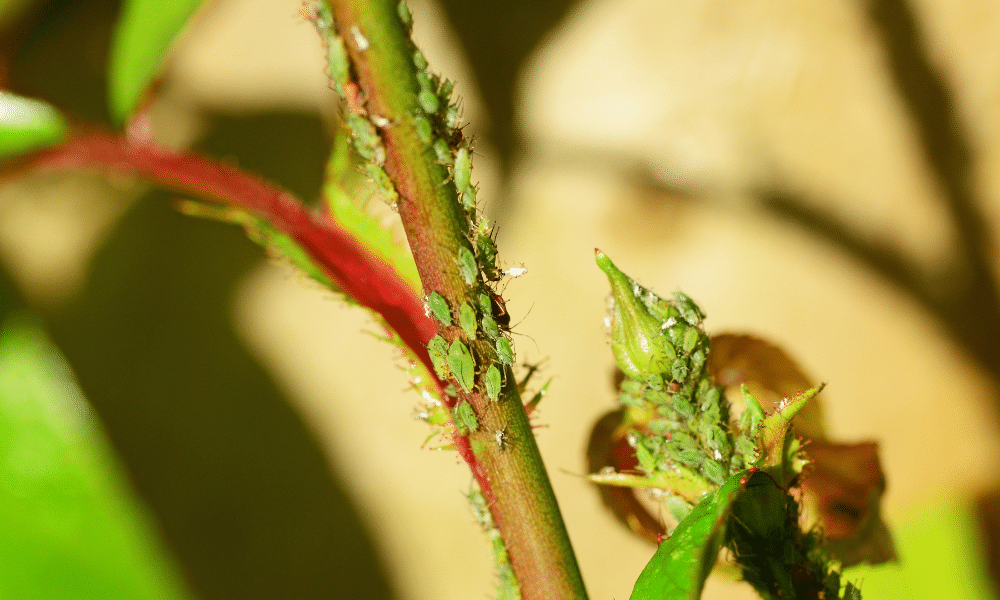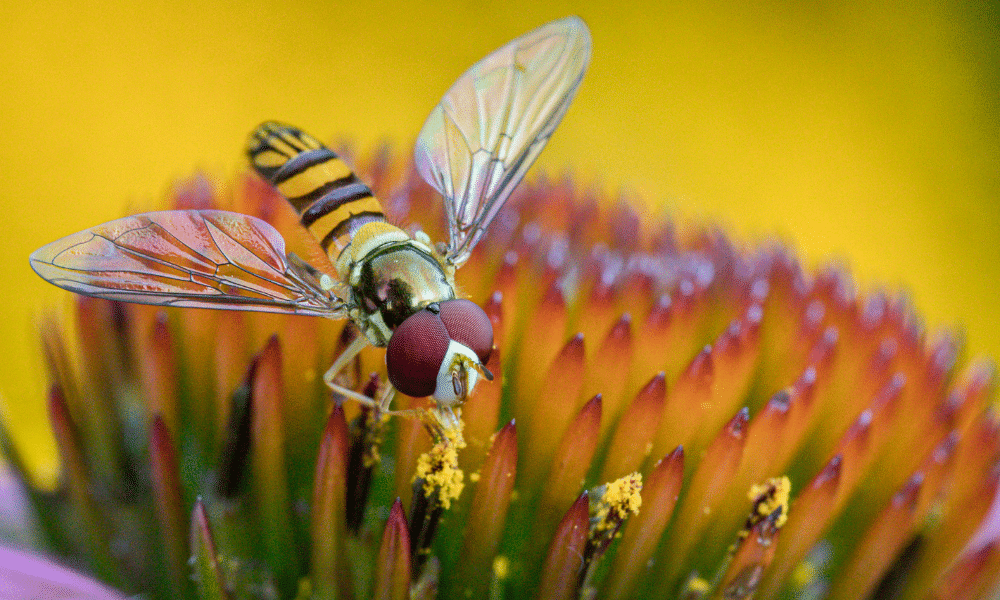At first, you might think that hoverflies are dangerous providing little benefit to your garden with their yellow and black striped bodies. But they actually consume pests and are one of the best pollinators. But, what do hoverflies eat exactly?
Adult hoverflies will consume nectar that they collect from plants such as Rudbeckia. Hoverfly larvae will consume much more including aphids, thrips and decaying animal matter.
We all know how beneficial bees and ladybirds can be to our gardens as pollinators and biological controls respectively. But, many gardeners don’t understand or aren’t aware of the benefits that hoverflies bring in what they eat.
What Plants Do Hoverflies Eat?
They don’t! Hoverflies do not eat plants but actually collect and eat nectar (much like bees). Generally, it’s only adult hoverflies that consume plant nectar because
We’ve put together an extensive list of plants that hoverflies like here. But if you want a couple of great flowers for hoverflies then opt for Ammi Majus, Rudbeckia or Verbena Bonariensis. Not only will these plants attract hoverflies but also other beneficial pollinators.
Adult hoverflies are actually the second-most important pollinator in the world, just behind bees, of course!
Some amateur gardeners see a bug on their plants (that isn’t a bee) and assume it is doing harm. But this is simply not the case with hoverflies. Hoverflies will not eat or cause any damage to your flowers, vegetables or plants.
What Insects Do Hoverflies Eat?
Adult hoverflies don’t actually eat any insects. They rely solely on nectar which they can use to turn into energy.
It is their larvae that feast on a range of insects – often pests – in the garden. Larvae need lots of protein to develop into an adult hoverflies. This is why hoverflies should be encouraged in your garden as beneficial insects.
So, what insects do hoverfly larvae eat? And can they be used a biological controls?
Aphids
An aphid infestation can appear anywhere. On a shrub in your flower bed isn’t too much of an issue. However, when it’s on vegetables that you want to eat, it can be a real problem. Attracting predators into your garden is one of the easiest, cheapest and most environmentally-friendly ways to deal with pests.
Hoverflies are one of the greatest predators of aphids. Hoverflies don’t live for long so need to go from the larvae stage to adulthood as quickly as possible. This means they need to consume as much protein as possible in order to grow. They get this from aphids.
Aphids can be a real pain to deal with in the garden and the last thing you want to be doing is spraying a concoction of chemicals in your garden – especially on vegetables that you want to eat. By encouraging hoverflies, you can deal with aphids without the need for chemicals.

Thrips
Much like aphids, thrips can be detrimental to many of your plants. Again, like aphids, they are loved by hoverfly larvae that will quickly work their way through an infestation.
Midges
Although hoverfly larvae will focus their attention on aphids where possible, they will consume any soft-bodied insects including midges. If there are no aphids, they will resort to any form of bugs that they can get their mouths into.
Decaying Animal Matter
Hoverfly larvae can still get plenty of nutrition from decaying animal matter. If they come across it then they’ll forage around trying to gather as much goodness from it as they can.
Although the decaying animal matter is not at the top of their list of foods to consume, if they come across it then they’re not going to pass on (what could be) an easy opportunity to get more protein into their bodies. Ultimately, they have one job and that is to grow.
No, hoverflies are not known to eat wasps. Instead, they mimic wasps as they know that wasps are dangerous insects. This helps them to ward off any potential predators such as birds.
Summary
Hoverflies will eat different things depending on what stage of their life it is currently at.
Adult hoverflies will only consume nectar that they forage from a range of plants. Hoverfly larvae, however, will consume a lot more and more variety. They are known to consume aphids, thrips and other decaying animal matter.
Attracting hoverflies isn’t too difficult, it’s all about providing plants and flowers that they will be attracted to. You should pick plants with flat, open flowers that have easy-to-access nectar, such as common yarrow.








I was just checking my Bramley Apple tree, I haven’t had any fruit yet. Previous years I’ve had lots of aphids on it which were being farmed by ants, only recently learned that they did this, so this year I put a grease band round the trunk and it worked. Whilst checking for aphids today, which I found and took some off, I came across a caterpillar or larvae and noticed there weren’t any aphids on that section of the tree. I came to check and found your site explaining that the larvae of Hoverflies eat aphids, so I’m really grateful for your knowledge, I’m trying hard to encourage insects etc and do get Hoverflies in my garden, will keep an eye on the aphids. Thanks again. Gillian
We planted alyssum in our yard to attract hoverflies. The issue was, we planted milkweed to attract butterflies, but the milkweed quickly gets covered with orange aphids. Upon planting the alyssum, we got hoverflies, but it kind of seems we don’t get butterfly caterpillars anymore. It seems the hoverfly larva might be consuming both aphids and the butterfly eggs. Are we attacking butterfly eggs, as we plant alyssum to combat the aphids?